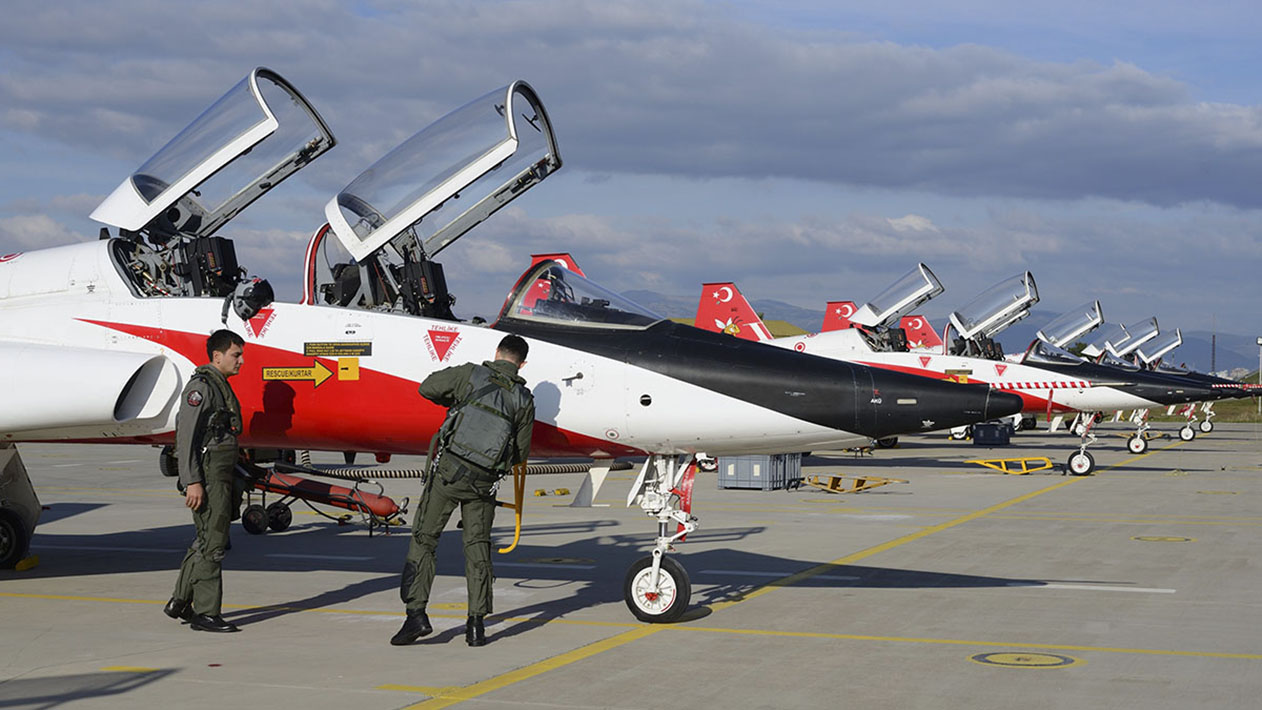AVIOBOOK.com
"the on line aviation corner"
edited by mauro finati/flighline iaps and paolo rollino/aviation reports
ăIGLI BEES
NEW HARDWARE FOR 121.FILO
(text and pictures by Mauro Finati & Paolo Rollino)
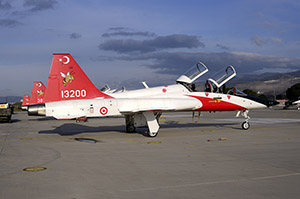
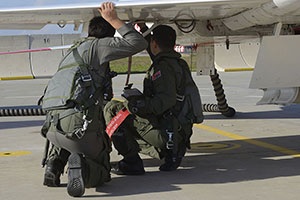
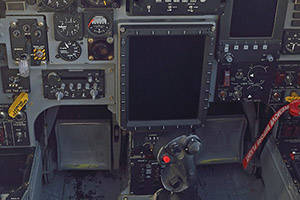
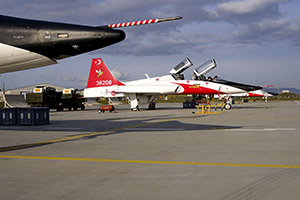
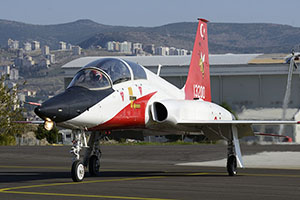
THE NEW T-38M 'ARI'
With the introduction of higher performance F-16 Block 50+ and the Common Configuration Implementation Program (CCIP) modernization package for the Block 40 and Block
50 machines launched in 2005, the THK has had to adjust its own training aircraft: T-37B/C and T-38A were no longer able to provide a suitable training for those pilots
destined for flying fouth-and fifth generation (F-16-50+ and JSF/F-35) aircraft.
The T-37 'Tweets' were therefore replaced by Korean KAI KT-1Ts Woong Bee turboprop, locally assembled by Turkish Aeroposace Industry (TAI). For the T-38A Talons a
modernization would extend their operating life well beyond 2020, and provide some of the avionic architecture present in the most modern fighters. The result expedites
the training of young cadets, and makes the transition to front-line fighters far smoother.
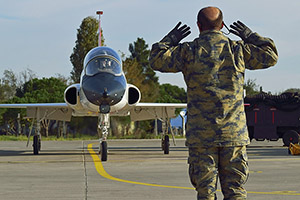
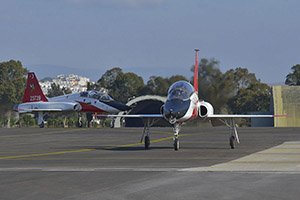
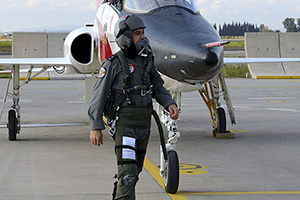
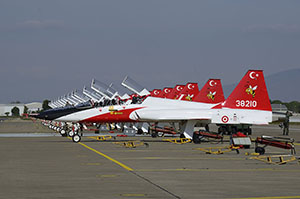
In 2007 a contract was signed between the Undersecretariat for Defense Industries (SSM) and TAI to design, plan and develop an avionics upgrade for THK Talons. The
program, which has produced the redesignated T-38M ARI (bee) provided for the upgrade of 55 jets, and an initial delivery to the THK took place on April 20, 2012.
According to the agreements, the first five Talons -two prototypes and the first three in the final configuration- would be upgraded by TAI,. At Akinci, while the
remaining 50 would be worked on at the THK's 1.HIBMK (Hava Ikmal Bakim Merkezi Komuntanligi - 1st Air Supply Maintenance Center Command) at Eskisehir with technical support from TAI engineers. The delivery of the final aircraft was to be made by 2015.
Key elements of the TAI upgrade project include the installation of a new central control computer, two multi-function displays in each cockpit, Head Up Display, hands
on throttle and stick (HOTAS) controls, and modern communications equipment. In addition to TAI, part of the design work and development was entrusted to Turkish firms
Aselsan and Havelsan. Other changes include the Hoffman AN/ARN-65 tactical air navigation (TACAN) system, Hazeltine AN/AP-64 IFF information friend or foe (IFF)
transponder, a Rockwell Collins AN/ARN-58 ILS instrument landing system (ILS), integrated GPS/inertial navigation system and a traffic collision avoidance system (TCAS).
Power is still supplied by a pair of General Electric J85-G-5s, which remain capable of pushing the nimble T-38M through the sound barrier.
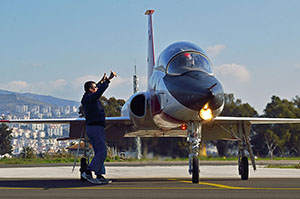
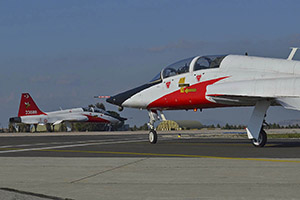
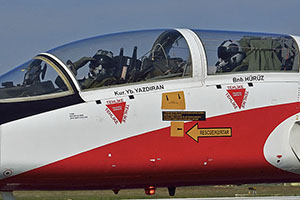
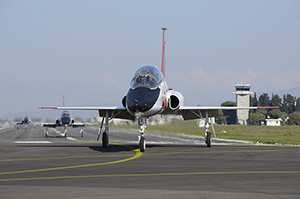
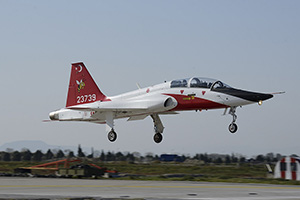
THE BEES OF 121.FILO
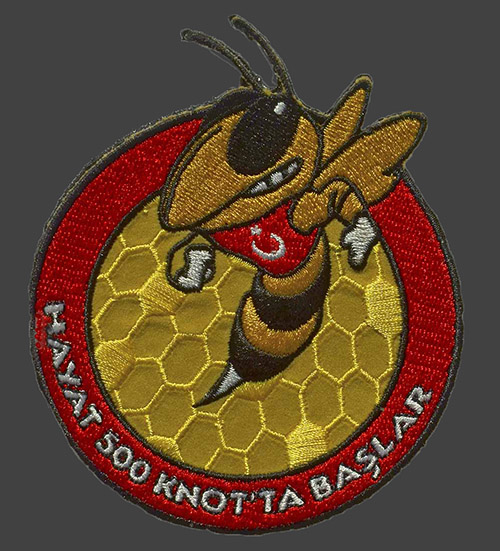 T-38M is used by ăigli-Izmir based 121.Filo for the basic and advanced jet pilot training phase. The course lasts six months, and begins with four to five weeks of
theoretical ground school, and right after starts the operational phase that includes 69 missions for a total of about 90 flying hours, and forty missions/forty hours
with the simulator. The syllabus takes in transition, instrument, formation and low-level flights; all of the stages include check rides to determinate student proficiency. Generally all missions are first studied in the classroom with the instructor pilot (IP), then rehearsed on the simulator and lastly flown live in the T-38M. As is standard for many flying schools, the simulators come in very handy for pupils to hone responses to in-flight emergency procedures and instrument flying.
The opening 12 sorties involve familiarization with the aircraft and its unique flying characteristics. This is essentially about how to operate the T-38M safely. The
landing is always a first major obstacle, since the approach speed is more than twice that of the KT-1T. After the first-solo check ride at the 13th mission, cadets
directly proced to the next phases: basic and tactical formation with two and four ships, extended trail and aerobatics, and night flying. During tactical formation
sorties they also fly 'Heat to Gun' exercises, which include Fox II and Gun Tracking maneuvers.
At the end of this period, and only after having successfully passed the ultimate test of a grueling marathon, cadets receive their much desired
T-38M is used by ăigli-Izmir based 121.Filo for the basic and advanced jet pilot training phase. The course lasts six months, and begins with four to five weeks of
theoretical ground school, and right after starts the operational phase that includes 69 missions for a total of about 90 flying hours, and forty missions/forty hours
with the simulator. The syllabus takes in transition, instrument, formation and low-level flights; all of the stages include check rides to determinate student proficiency. Generally all missions are first studied in the classroom with the instructor pilot (IP), then rehearsed on the simulator and lastly flown live in the T-38M. As is standard for many flying schools, the simulators come in very handy for pupils to hone responses to in-flight emergency procedures and instrument flying.
The opening 12 sorties involve familiarization with the aircraft and its unique flying characteristics. This is essentially about how to operate the T-38M safely. The
landing is always a first major obstacle, since the approach speed is more than twice that of the KT-1T. After the first-solo check ride at the 13th mission, cadets
directly proced to the next phases: basic and tactical formation with two and four ships, extended trail and aerobatics, and night flying. During tactical formation
sorties they also fly 'Heat to Gun' exercises, which include Fox II and Gun Tracking maneuvers.
At the end of this period, and only after having successfully passed the ultimate test of a grueling marathon, cadets receive their much desired
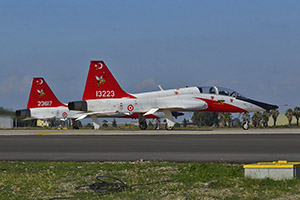
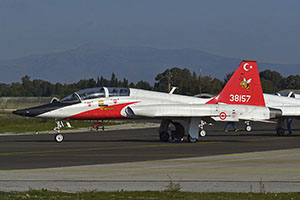
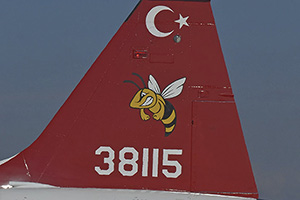
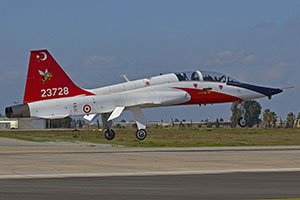
Training at ăigli is not yet complete as the new pilots stay here for a few more weeks to complete even the phase of the HHG course (Harbe Hazirliga Gecis - Introduction
to Fighter Fundamentals).
The IFF course lasts for some 15 sorties/17,30 flying hours and 10 simulators sorties (10 hours). During the flying missions pilots also go on the range: thanks to the
aforementioned avionics improvements, the new T-38M can simulate the release of both air-to-air and air-to-ground weapons. Pilots can improve their offensive/defensive
basic fighters maneuvers, surface attack and low-level navigation, all performed in a much more realistic and aggressive way. The aim of IFF sorties is to learn how to
use the machine to the limit of its flying characteristics, and not only how to pilot it: students must become familiar with employing a weapon system and not just a
jet.
Usually in a year some 70-80 students complete the training on the T-38 and classes are with a maximum of 8-10 students, but the number depends on the THK requirements.
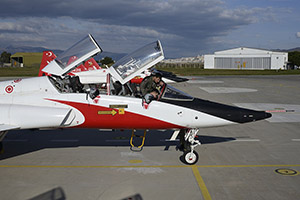
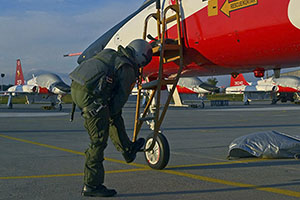
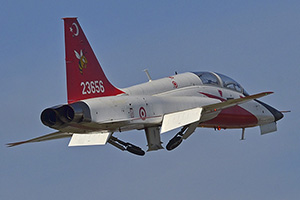
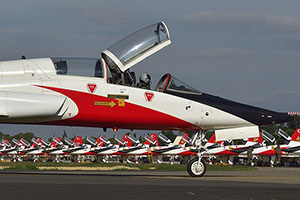
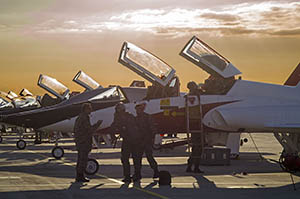
We'd like to thank Col. URAL and all 121.Filo Staff for their support and collaboration during the visit.
2017©Paolo Rollino/pierrestudio
